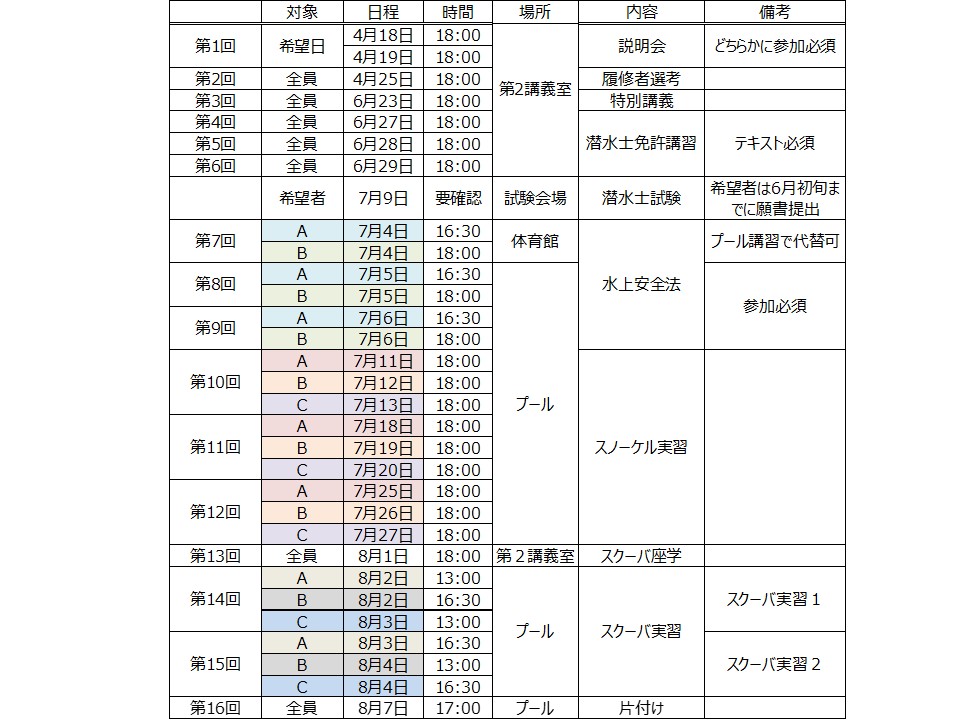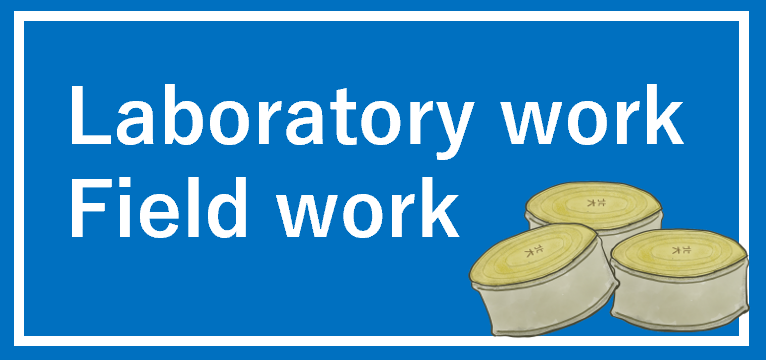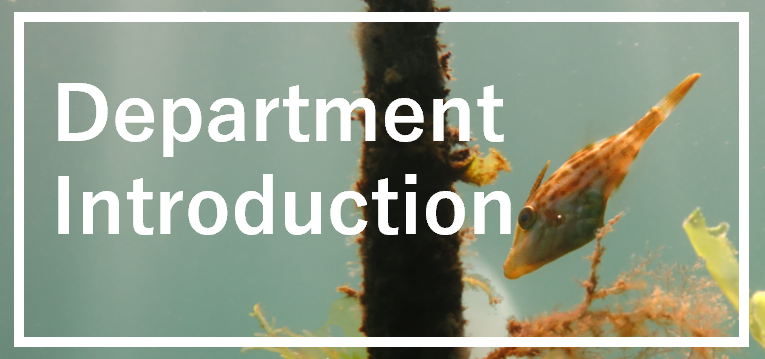Study and Training of Marine Research Diving
Rangkaan topik
-
Understanding the details of aquatic fields, such as undersea, based on real-world experience is important for a more practical study of fisheries science. For example, direct observation of aquatic organisms and the physical environment of their habitats is an effective means of gaining a deeper and broader understanding of fisheries science. However, unlike other land-based learning activities, diving requires the acquisition of knowledge and skills to master diving techniques and ensure safety. This course aims to experience, learn, and improve elementary diving techniques and to master safety management methods in the aquatic environment. In this training, students can attend lectures to obtain a diver's license, and as an option, those who wish can take additional training (at their own expense) to obtain a diving license (C-card) from NAUI (National Association of Underwater Instructors). Practical training will be conducted in the Faculty of Fisheries pool (3m depth) and on the beach (when C-card is obtained).
-
Guidance is given in late April of each academic year. At that time, a survey of course preferences will be conducted, taking into consideration schedules, necessary expenses, health status, and other factors. If the course is oversubscribed, the reasons for taking the course will be surveyed during the second lecture the following week, and the final decision will be made (for the past several years, the number of applicants has been within the maximum number).
-
In principle, students are required to attend all lectures for safety reasons and because this course is a practical training course. On the other hand, it is difficult to coordinate everyone's schedule since the courses are offered to all departments and majors. In addition, absences due to illness or other reasons are expected. Therefore, a certain amount of supplemental courses are planned. Below is the proposed schedule for FY2023.
-
Lecture content and schedule will be explained, and participants will be selected.
-
Group discussion on safety assurance based on diving accident cases.
Dr. Tetsu of Tokai University, a specialist in underwater archaeology, will give a special lecture on case studies of activities using diving. -
Lecturer Octopus Maruo, a diving instructor, will conduct a training course for the diving instructor examination, which is usually held in Hakodate in mid-July.
-
Water Safety Laws will be taught by a Japanese Red Cross instructor in the gymnasium and swimming pool.
-
プールで基本的な遊泳およびスノーケリング実習を行う。
-
This course is a lecture on activities using diving equipment, and is considered as a course for obtaining the C-card.
-
Practical training in the pool under the guidance of an instructor on diving activities using equipment.
-
The students will go to the southern coast of Hokkaido for ocean training. The rest of the course is an extra-curricular activity, and an additional fee will be charged. However, since the training up to the pool training is included in the training, you can obtain a license at a lower price than you would pay elsewhere.



